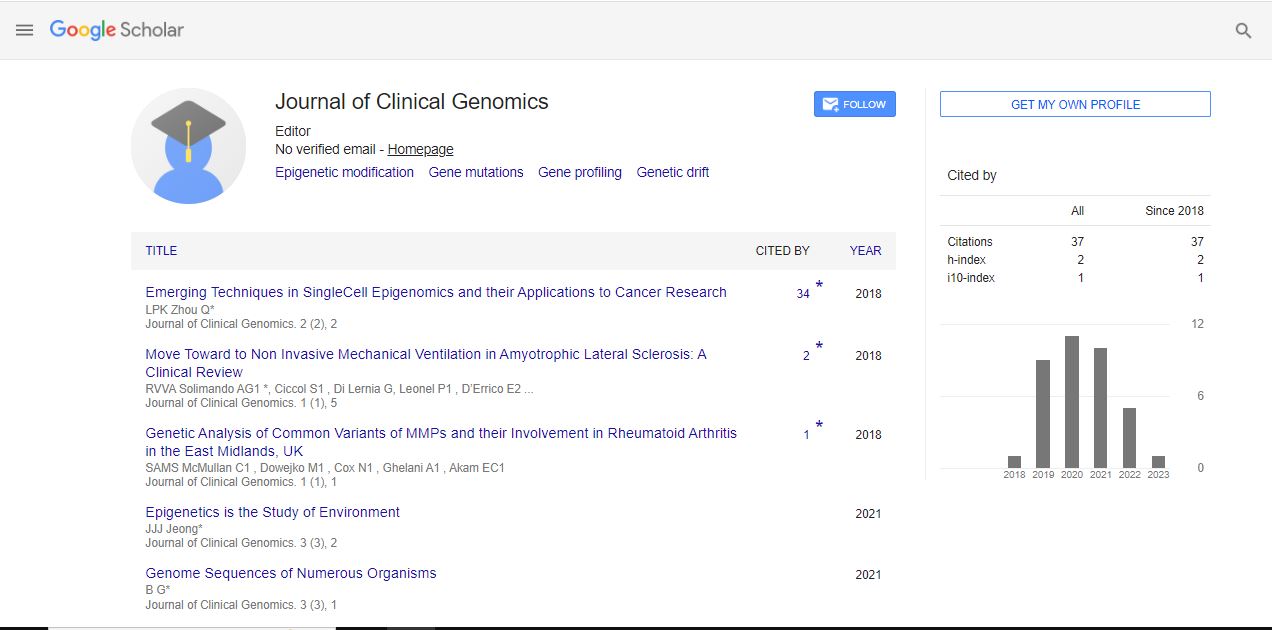Perspective, J Chromatography Res Vol: 6 Issue: 1
Techniques and Mechanism of Micellar Electrokinetic Chromatography
Sanjay Popat*
1Department of Pharmacy, University of London, London, United Kingdom
*Corresponding Author: Sanjay Popat
Department of Pharmacy, University of
London, London, United Kingdom;
E-mail: sanjay.popat@rmh.nhs.uk
Received date: 16 February, 2023, Manuscript No. JCGR-23-95943;
Editor assigned date: 20 February, 2023, PreQC No. JCGR-23-95943 (PQ);
Reviewed date: 10 March, 2023, QC No. JCGR-23-95943;
Revised date: 28 March, 2022, Manuscript No JCGR-23-95943 (R);
Published date: 07 April, 2023, DOI: 10.4172/jcgr.1000046.
Citation: Popat S (2023) Techniques and Mechanism of Micellar Electrokinetic Chromatography. J Chromatography Res 6:1.
Keywords: Micellar Electrokinetic Chromatography
Description
Micellar Electrokinetic Chromatography (MEKC) is a powerful separation technique that is widely used in analytical chemistry to separate and analyze various types of analytes, including drugs, proteins, peptides, and other biological compounds. It is a type of capillary electrophoresis that employs micelles as a pseudo-stationary phase to separate analytes. The technique is based on the differential migration of analytes in the presence of a micellar solution. The micelles act as a pseudo-stationary phase and separate the analytes based on their hydrophobicity and charge.
The separation in MEKC is based on the partitioning of analytes between the micellar phase and the aqueous phase. The analytes that have a higher affinity for the micelles will migrate slower than those that have a lower affinity. It is also affected by the charge of the analytes, the ionic strength of the buffer, and the pH of the buffer and by several factors, including the concentration and type of surfactant, the buffer pH and ionic strength, and the temperature. The type and concentration of the surfactant affect the micelle size and shape, which, in turn affect the separation efficiency and selectivity. MEKC can be operated in several modes, including normal-phase MEKC, reverse-phase MEKC, and ion-pair MEKC. In normal-phase MEKC, the surfactant concentration is higher than the Critical Micelle Concentration (CMC), and the separation is based on the hydrophobicity of the analytes. In reverse-phase MEKC, the surfactant concentration is below the CMC and the separation is based on the hydrophobic interaction between the analytes and the micelles. In ionpair MEKC, an ionic reagent is added to the buffer to form an ion-pair with the analytes, which increases their hydrophobicity and enhances the separation. The pH of the electrolyte solution also play an important role in MEKC, as it affects the charge of the analytes and the micelles. The ionic strength of the electrolyte solution affects the conductivity of the solution and the electrophoretic mobility of the analytes. The temperature of the electrolyte solution also affects the separation efficiency, as it influences the micelle size and the viscosity of the solution.
MEKC offers several advantages over other separation techniques. The technique can be used to separate a wide range of analytes, including charged and uncharged molecules, and it can achieve high separation efficiency and resolution. It is also compatible with a wide range of detection methods and can be used for quantitative and qualitative analysis. The main limitation of MEKC is the potential for column fouling due to the buildup of impurities on the stationary phase. This can be mitigated by using a pre-treatment step, such as filtration or pH adjustment, or by replacing the stationary phase periodically. Recent developments in MEKC include the use of new surfactants, such as ionic liquids, and the development of hybrid techniques, such as MEKC coupled with mass spectrometry. These developments have expanded the scope and applications of MEKC, making it a versatile and powerful separation technique.
MEKC is a powerful separation technique that combines the advantages of chromatography and electrophoresis. The technique has found extensive applications in various fields, including pharmaceutical research, environmental monitoring, and food analysis. The use of new surfactants and hybrid techniques has further expanded the scope and applications of MEKC.
 Spanish
Spanish  Chinese
Chinese  Russian
Russian  German
German  French
French  Japanese
Japanese  Portuguese
Portuguese  Hindi
Hindi 